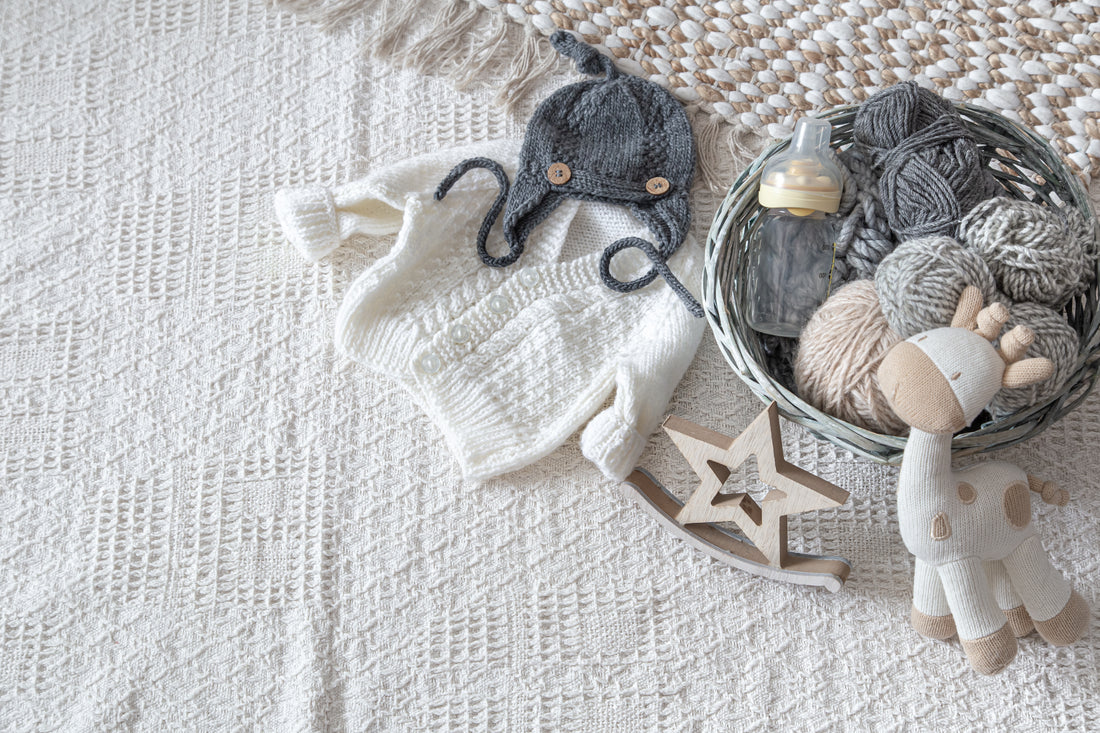
New born Baby Clothes: How to Dress Your Newborn Comfortably
Share
Picking newborn baby clothes is a fun process, but often, the task of finding the best quality and affordable one can be a little tricky. Even though you know the bare necessities and have purchased all the clothing items, finding a way to present them in an appealing manner and for various seasons can be quite troublesome.
Newborns have delicate skin and delicate little arms and legs, so dressing them takes some skill. In today’s blog, we’ll guide you on how to dress your little one in newborn baby clothes and will also provide important tips about dressing your newborn comfortably through the winter and summer.
Buying Newborn Baby Clothes: Important Tips
There are some key points to remember when choosing newborn baby clothes. Newborn babies don't feel comfortable when clothes are pulled over their heads. So, choose clothes that have buttons on the front or side. If such clothes are unavailable, choose items with wide and stretchable neck openings.
Secondly, avoid choosing new born baby clothes with buttons on their back. Newborns commonly sleep on their backs all through the first months, and buttons ought to make them uncomfortable.
Moreover, pick garments crafted from organic and breathable fabrics like cotton to make sure they don’t aggravate your child’s skin. Also, ensure the clothes are not made using chemical compounds and are flame-resistant.
How to Dress Your Baby in Newborn Baby Clothes
Now let us guide you on how to put clothes on your newborn. Even if your baby is wriggling or irritable, it’s important to remain patient and gentle; otherwise, you’ll make things harder for both of you.
Always place your newborn’s shirt over the back of their head first. Then, gently pull it over their face. Follow the same practice when removing clothes, but in reverse. Also, don’t pull your baby’s arms when dressing or undressing them; slowly guide them into the armholes. For long sleeves, gather the sleeves together and stretch them to create a wider hole. Then, hold the baby’s hand and gently slide the arm into it.
If your newborn is having a rather irritable day and is fidgeting a lot, try reassuring them with a distraction like their favourite toy, a nursery rhyme, or making funny faces and noises.
Newborn Baby Clothes for Hot Weather
When the weather is hot, dress your newborn in loose and soft clothing. Just a singlet and a nappy are great to ensure they don’t get too sweaty or overheated. Select fabrics with a high UV protection factor (UPF) and if the clothing doesn’t display it, choose new born baby clothes made from lightweight, closely woven materials.
If you’re making plans to go outdoors, ensure your child is wearing a sun hat. Moreover, try to cover a great deal of your child’s skin as feasible since sunscreen isn’t recommended for infants less than six months old. You can use full-sleeve singlets and pyjamas, or wrap them loosely in a light wrap. In addition, try to keep them mostly in shaded areas to protect their skin from rashes and sunburn.
Newborn Baby Clothes for Cold Weather
The best technique to dress your newborn in winter is layering. Dressing in layers is handy because if your baby gets warm and irritated, you just need to take off a layer of apparel, and they’ll be comfortable once more. Ideally, your newborn must have one extra layer in comparison to how you are dressed.
Fun fact: babies mostly lose heat through their heads! So, a crucial winter item in your new born baby's clothes should be a beany or woollen hat to keep their head warm, especially when you are outdoors. To prevent overheating, do away with the hat whilst you are indoors or riding an automobile or bus.
Newborn Baby Clothes for Sleeping
For your newborn to sleep happily and securely, make sure they're not too tightly packed or underdressed. Their clothing must be consistent with the temperature of the room. If your new child feels too hot or too cold, they will become uneasy and stay disturbed during sleep. Moreover, overheating your baby increases the risk of sudden infant death syndrome (SIDS) and sudden unexpected death in infancy (SUDI).
Good indicators to make sure your baby is dressed conveniently in summertime include a warm tummy and relatively cooler arms and feet. If your newborn looks flushed or sweaty, they might be too hot. In winter, the tip of their nose should be warm and they should be wearing an appropriate number of layers.
Refrain from covering your newborn’s head and face whilst they’re dozing. This is because babies regulate their body temperature through their heads and faces, and covering them can result in overheating. Besides overheating, another concern while newborns sleep is choking. To prevent this, remove your baby’s bib or anything else that might cover their face or mouth as they sleep.
If you wrap your newborn when putting them to bed, use a wrap made from muslin or thin cotton, and don’t overdress your baby beneath it. If you use blankets, they should also be made from lightweight organic fabrics. Layering blankets works well in both summer and winter since you can add or remove them according to the temperature of the room.
If you’re concerned about blankets covering your newborn's face as they sleep, you can opt for a safe baby sleeping bag. Pick one with a fitted neck, armholes, and no hood. Moreover, sleeping bags also help maintain body temperature more consistently.
To Sum Up
Dressing a child in newborn baby clothes may be tough to discern, but it will become a breeze once you recognize the basics. Choose garments crafted from soft and organic fabric which includes cotton and check for an extremely low fire danger label. Also, avoid clothes with too many buttons.
Dress your newborn in an appropriate number of layers to ensure they aren’t too hot or too cold. Choose light and loose clothes in summer and warm, woollen clothing in winter. When going outside in hot weather, cover as much skin as possible and use a sun cap. In cold weather, use layers to keep your newborn warm and keep their head covered when you go outside.
Lastly, whilst you put your child to bed, ensure they are dressed in line with the temperature of the room and their head and face is exposed.
